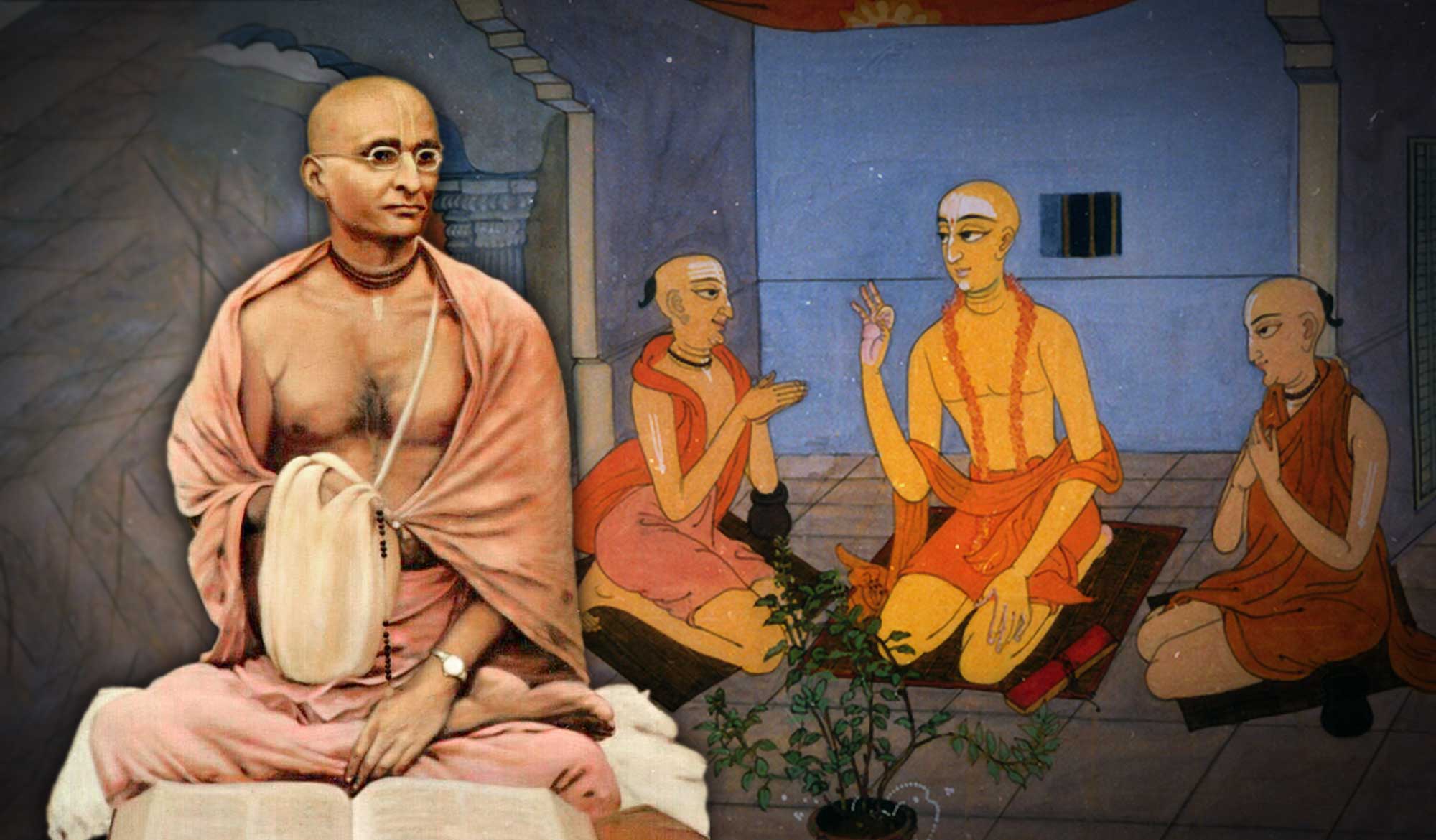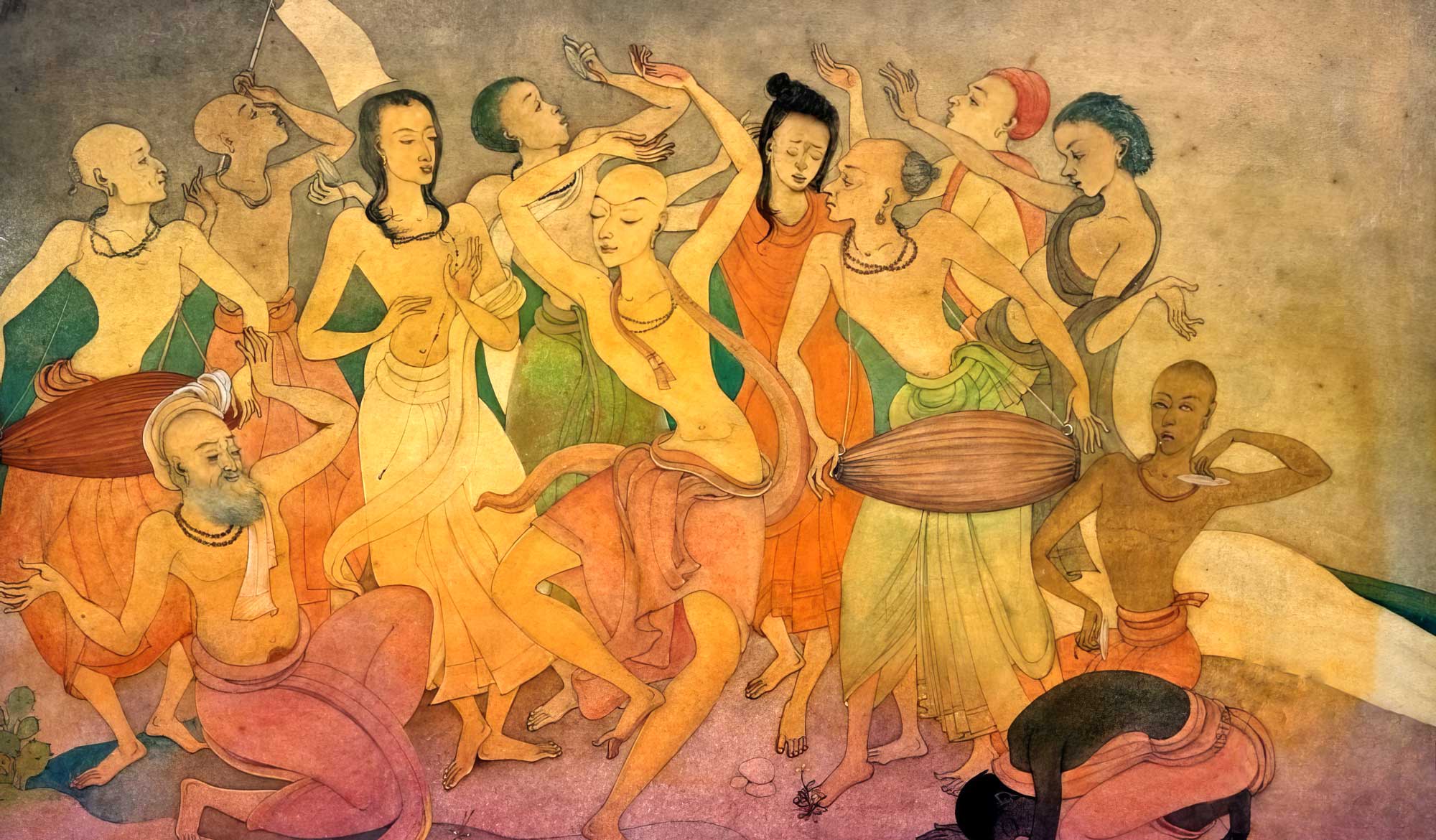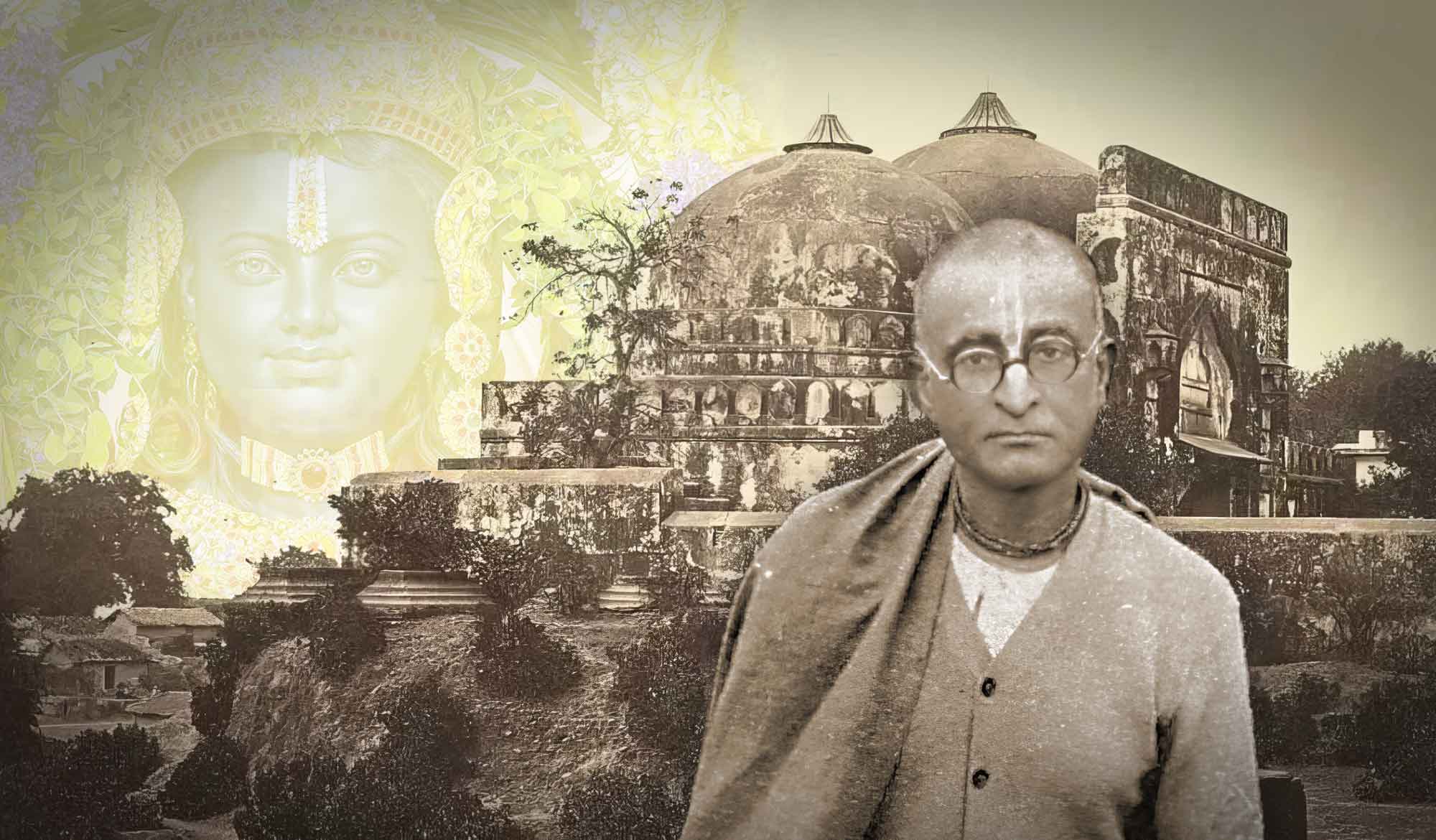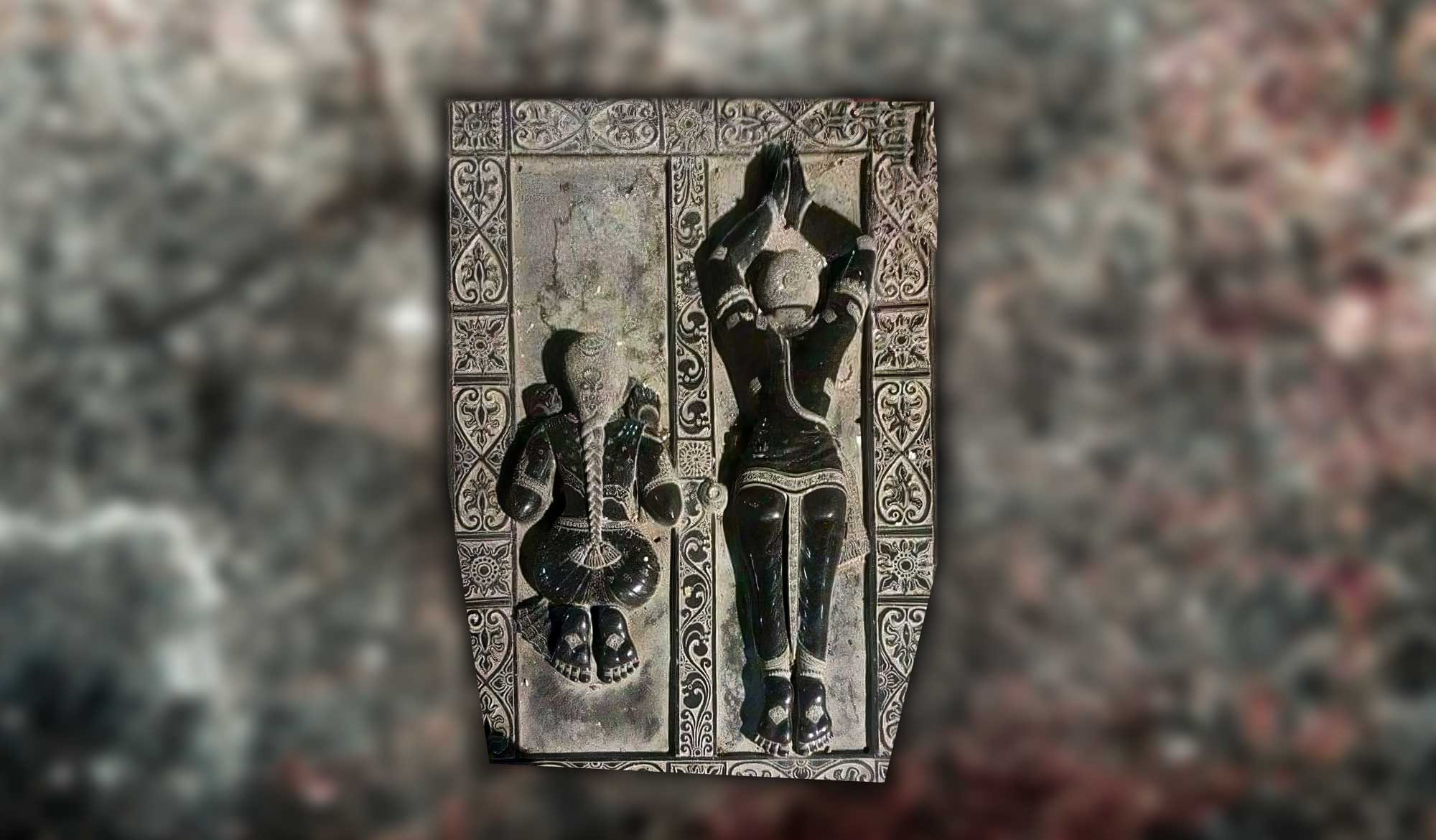Overview
Sajjana – Satya-sāra (A Devotee is the Epitome of Truth) was written by Śrīla Bhaktisiddhānta Sarasvatī Ṭhākura Prabhupāda and published in Sajjana Toṣaṇī, Vol. 20, Issue 4 in 1917. Continuing with his elaboration on the twenty-six qualities of a devotee, Sarasvatī Ṭhākura discusses what is relative and absolute truth.
The third quality of a devotee is that he is satya-sāra (the epitome of truth). One is said to be satya-sāra if, in body, mind and words, he never deviates from the truth. When a person deviates from the truth, he is defined as asādhu or avaiṣṇava (a non-devotee). Only devotees or pure Vaiṣṇavas are satya-sāra. One who knows untruth to be futile (asāra), and only accepts that truth which is free from duplicity as essential, is satya-sāra.
Taking shelter of mundane neutrality, the realisation of the existence of the nature of an object is accepted by people to be the truth. The truth which is realised by people who possess lust, anger etc. and are impelled by their momentary instincts, may only be a relative truth. But when lust, anger etc. are removed, then a person can understand the initial truth (that is inherently within him).
In the early days of human civilisation, due to a lack of knowledge, the understanding of modern science was absent in many places. If we analyse the conceptual history of the ancient Greeks, the academics of China, and the Indian scholarly section in relation to the material elements, then we see that their conception of what they experienced as truth has changed to a great degree in many cases. Man, when he has had no previous participation within human society, has very little experience about what is actually truth. The conception of truth to an uneducated man, or a man under the sway of lust and anger is changed by the influence of education. Relative truth is understood differently in various countries and various centres. In many places, due to bhrama (the tendency to commit mistakes), pramāda (the tendency to be in illusion), vipralipsā (the tendency to cheat) and karaṇāpātava (imperfect senses), falsehood is thought to be truth, and in their absence, when that falsehood vanishes, the truth comes and destroys ignorance.
There is a difference between eternal truth and relative truth. Seeking relative truth, the jīva becomes anyābhilāṣī (covetous to fulfill material desires). Sometimes he goes in search of the results of dharma, artha and kāma (religiosity, wealth and mundane desires), and due to becoming expert in karma, he attains mundane piety (puṇya). Sometimes, due to his thirst to become a liberationist, he abandons sin and piety and becomes a māyāvādī engaged in ahaṁgrahopāsana (self-worship). Such persons are known as ajñānīs (ignorant), ku-karma-ratas (those attached to wicked activities) and yathecchācārīs (debauchees). The perception of truth for these persons is completely bewildered, incomplete, and a mixture of things that are fit to be abandoned.
The conception of the transcendental devotee of Hari is not contemptible like that. He knows that Hari alone is the Supreme Truth. When the devotee of Hari identifies himself as being averse to Him, then his realisation of Hari, the Absolute Truth, diminishes. This misconception of adversity creates a false identity within him and attacks his inner tendency and inherent inclination – then false things are considered to be true. Such a servant of Hari, considering partial knowledge to be truth, turns away from hari-darśana and perceives the Paramātmā. Then he considers the manifestation of Paramātmā to be the truth. Again, when he has darśana of only the initial spiritual stage of He who possesses qualities, he becomes a knower of Brahman, which is considered by him to be the ultimate Object. Again, due to a similar lack of knowledge, from the external point of view, he goes to experience the truth in Devi-dhāma and, under the shelter of vivartavāda* he considers the body created by māyā’s modes to be the self.
*Note: Vivartavāda is the monistic concept of Ādi Śaṅkara that the world is an apparent transformation of Brahman under the effect of māyā.
Steadily, from the external perspective, the false ego which arises from aversion to Hari, becomes stabilised and is termed as ‘intelligence.’ Later, this mortal, non-eternal stabilised intelligence, due to its fluctuating nature, in the process of accepting and rejecting, becomes bewildered and sees the existence of ‘I-ness’ within the mind. Under the shelter of the material modes of Devī-dhāma, the mind accepts the senses and sense-gratifaction and in a gross way, it becomes the master of material enjoyment. Here, at this point, the zenith of his averseness to Hari is seen. Continuing to become more averse to Kṛṣṇa, who is the supreme object of truth, the jīva attains such a position. All this is a sign of his independence.
Apart from the supreme truth of Hari who has relaxed His opulence and is replete with sweet pastimes, as well as the all-powerful form of majesty and reverence, there is also the realisation of the partial truth of Paramātmā, who is only a fraction of complete knowledge and devoid of the truth of madhura-bhāva. After that, there is the brilliance of the covering of Hari’s body which is visible as the effulgence of truth which is the Brahman of the Upaniṣads.
Now, while still under a covering of deception, the supreme truth begins to become visible and engages with the jīva’s egoistic pride. Gradually, through the mind and intelligence, it becomes shrouded by so many relative truths and the supreme truth becomes excluded. This realisation of ‘truth’ emanating for the limited world prevents the jīva from becoming satya-sāra.
In this Devī-dhāma, instead of engaging the senses that are meant to be sacrificed in the mood and sentiment of being a devotee of Gaura in the service of the supreme truth, the jīva engaged them in the service of the relative truth found in mortal objects. Śrī Gaura Bhagāvan then engaged him in that service which is averse to Him. Under the spell of the disorder of averseness to Śrī Gaura Bhagāvan, some jīvas then considered Him as their own object of enjoyment. Forgetting the supreme truth that vipralambha (divine separation) is the nourisher of sambhoga (divine union), they came to understand that prakṛta sambhoga (mundane sexual union) is supported by Śrī Gaurāṅga. All those jīvas who were fictitiously dedicated to Gaura like the Āulas, Bāulas, Kartābhajās, Neḍās, Daraveśas, Sāñis, Sahajiyās, Sakhī-bhekīs, Smārtas, Jāta-gosāñis, Ativāḍīs, Gopīchāḍis, Gaurāṅga-nāgarīs etc. considered Śrī Gaurāṅga and His associates to be jīvas, just like them. For that reason alone, seeing that the truth would be misinterpreted, Śrīpāda Prabodhānanda Sarasvatī Prabhu sang:
kālaḥ kalir balina indriya-vairi-vargāḥ
śrī-bhakti-mārga iha kaṇṭaka-koṭi-ruddhaḥ
“Now in the age of Kali, my inimical senses have become strong and the path of bhakti is strewn with millions of thorns.” (Caitanya-candrāmṛta 93)
Gaura-bhakti was scandalised by the Āulas, Bāulas etc, who took pride in claiming to be gaura-bhaktas, and many devotees of Gaura from those particular groups became curious to know how they gave pain to the pure devotees. But those who possessed such curiosity planned to discover the truth in such an abominable manner that they resorted to hostility towards the Vaiṣṇavas, and forgetting tad viddhi praṇipātena paripraśnena sevayā, they became established in falsehood and ineffectuality.
A Vaiṣṇava, or a devotee of Gaura, is satya-sāra. Thus, the anti-devotional efforts of the aforementioned parties, who aspired to be identified as gaura-bhaktas, were not accepted as a division of gaura-bhakti. The rejection of their bad association is the best example of actually becoming satya-sāra. In a real sense, the only object of worship for those who have taken shelter of the feet of Śrī Gaura are the holy feet of Śrī Gāndharvikā-Giridhara. This alone is the state of satya-sāra for the devotees of Gaura. It is the state of satya-sāra for the unalloyed eternally pure devotees of Gaura. By deviating from this with words that are asatya (false) and asāra (useless), one cannot engage in gaura-bhajana. Śrī Gaura Bhagavān is not māyā, He is not a play-thing of māyā, nor is He a product of the imagination of the jīvas who are opposed to Hari. He alone is Śrī Gāndharvikā-Giridhara. He is certainly no other object. All things originate from Kṛṣṇa’s svāṁśas (direct expansions) and vibhinnāṁśas (separated expansions). All potencies are generated from Rādhikā. Śrī Gāndharvikā-Giridhara are the primary source of all existence in the realm of imagination or eternal truth. Therefore, for those who have taken shelter at the feet of Gaura, They are the only worshipable object for them. Otherwise, according to the verse, ye’py anya-devatā-bhakta,*one’s service will be unauthorised.
* (‘O Kaunteya, those that worship other demigods with faith actually worship Me, but they do so improperly.’ – Bhagavad-gītā 9.23).
(Translated into English by Sanātana Dāsa Adhikārī)
Related Articles & Books
- Vaiṣṇava Nindā by Śrīla Bhaktivinoda Ṭhākura
- A Devotee is Merciful (Sajjana – Kṛpālu) by Śrīla Bhaktisiddhānta Sarasvatī Ṭhākura
- A Devotee Does Not Engage in Violence (Sajjana – Akṛta-droha) by Śrīla Bhaktisiddhānta Sarasvatī Ṭhākura
- A Devotee is the Epitome of Truth (Sajjana – Satya-sāra) by Śrīla Bhaktisiddhānta Sarasvatī Thākura
- Śiva-tattva & the Position of Lord Śiva by Śrīla B.R. Śrīdhara Mahārāja
- Oh Bābā! Bolacche-re! by Śrīla B.R. Śrīdhara Mahārāja
- Problems and Solutions by Śrīla B.R. Śrīdhara Mahārāja
- The Highest Attainment and Present Adjustment by Śrīla B.R. Śrīdhara Mahārāja
- Āgun Jvālbe (Light the Fire!) by Śrīla B.R. Śrīdhara Mahārāja
- Dharma and the Modern World by Śrīla A.C. Bhaktivedānta Swami Prabhupāda
- Faith Confirms the Absolute by Śrīla B.G. Narasiṅgha Mahārāja
- Go Deeper! by Śrīla B.G. Narasiṅgha Mahārāja
- To Be a Servant by Śrīla B.G. Narasiṅgha Mahārāja
- Harmony – Real and Apparent by Swami B.V. Giri
- The Definition of Faith by Gaura Gopāla Dāsa
- Ātma Samīkṣā – The Value of Introspection by Kalki Dāsa
- Frogs in the Well of Prejudice by Kalki Dāsa
Further Reading
- Śraddhā (Faith) – Quotes by Bhaktivinoda Thakura
- Śraddhā and Śaraṇāgati by Śrīla Bhaktivinoda Ṭhākura
- The Association of Sādhus by Śrīla Bhaktivinoda Ṭhākura
- Epilogue to Śrī Kṛṣṇa Karṇāmṛta by Śrīla Bhaktivinoda Ṭhākura
- Prīti (Love) by Śrīla Bhaktivinoda Ṭhākura
- A Dispute Concerning Mahāprasāda by Śrīla Bhaktivinoda Ṭhākura
- Śraddhā by Śrīla Bhaktivinoda Ṭhākura
- Materialistic Association by Śrīla Bhaktivinoda Ṭhākura
- Dispelling Doubts by Śrīla Bhaktivinoda Ṭhākura
- The Enemy by Śrīla Bhaktivinoda Ṭhākura
- A Critique of the book ‘Vanamālā’ by Śrīla Bhaktivinoda Ṭhākura
- Kali by Śrīla Bhaktivinoda Ṭhākura
- Offences Against Bhakti by Śrīla Bhaktivinoda Ṭhākura
- Kārttika-vrata by Śrīla Bhaktivinoda Ṭhākura
- Violence and Mercy by Śrīla Bhaktivinoda Ṭhākura
- Abandoning Bad Association by Śrīla Bhaktivinoda Ṭhākura
- Sad-guṇa and Bhakti by Śrīla Bhaktivinoda Ṭhākura
- The Process of Initiation by Śrīla Bhaktivinoda Ṭhākura
- Dainya (Humility) by Śrīla Bhaktivinoda Ṭhākura
- Vaiṣṇava Nindā (Offences to Devotees) by Śrīla Bhaktivinoda Ṭhākura
Pilgrimage with Swami Narasiṅgha – Part 7: Keśī Ghāṭa
Continuing with our pilgrimage series, this week Śrīla Narasiṅgha Mahārāja takes us to Keśī Ghāṭā where he tells us about Madhumaṅgala’s meeting with the Keśī demon, what Keśī represents, and how Śrīla Prabhupāda almost acquired Keśī Ghāṭa. Mahārāja also narrates his own experience. This article has been adapted from a number of talks and articles by Narasiṅgha Mahārāja.
Prema Dhāma Deva Stotram with the Narasiṅgha Sevaka Commentary – Verses 61-65
In verses 61 to 65 of 'Prema Dhāma Deva Stotram', Śrīla Śrīdhara Mahārāja narrates the pastime of Śrī Caitanya at Caṭaka Parvata In Purī and explains how the scriptures produced by Brahmā and Śiva are ultimately searching for the personality of Mahāprabhu who is merciful too all jīvas, no matter what their social position.
Prabhupāda Śrīla Sarasvatī Ṭhākura’s Visit to Ayodhyā
With the forthcoming observance of Śrī Rāma Navamī, we present 'Prabhupāda Śrīla Sarasvatī Ṭhākura’s Visit to Ayodhyā' written by Śrīla Bhaktisiddhānta Sarasvatī Ṭhākura Prabhupāda from The Gaudīyā magazine, Vol 3. Issue 21/ In December 1924, after visiting Benares and Prāyāga, Sarasvatī Ṭhākura visited the birth-site of Śrī Rāmācandra in Ayodhyā.
Śaraṇāgati – The Only Path to Auspiciousness
In this article, 'Śaraṇāgati - The Only Path to Auspiciousness', Dhīra Lalitā Dāsī analyses the process of śaraṇāgati (surrender) beginning with śraddhā (faith). She also discusses the role of śāstra and the Vaiṣṇava in connection with surrender.
Pilgrimage with Swami Narasiṅgha – Part 7: Keśī Ghāṭa
Continuing with our pilgrimage series, this week Śrīla Narasiṅgha Mahārāja takes us to Keśī Ghāṭā where he tells us about Madhumaṅgala’s meeting with the Keśī demon, what Keśī represents, and how Śrīla Prabhupāda almost acquired Keśī Ghāṭa. Mahārāja also narrates his own experience. This article has been adapted from a number of talks and articles by Narasiṅgha Mahārāja.
Prema Dhāma Deva Stotram with the Narasiṅgha Sevaka Commentary – Verses 61-65
In verses 61 to 65 of 'Prema Dhāma Deva Stotram', Śrīla Śrīdhara Mahārāja narrates the pastime of Śrī Caitanya at Caṭaka Parvata In Purī and explains how the scriptures produced by Brahmā and Śiva are ultimately searching for the personality of Mahāprabhu who is merciful too all jīvas, no matter what their social position.
Prabhupāda Śrīla Sarasvatī Ṭhākura’s Visit to Ayodhyā
With the forthcoming observance of Śrī Rāma Navamī, we present 'Prabhupāda Śrīla Sarasvatī Ṭhākura’s Visit to Ayodhyā' written by Śrīla Bhaktisiddhānta Sarasvatī Ṭhākura Prabhupāda from The Gaudīyā magazine, Vol 3. Issue 21/ In December 1924, after visiting Benares and Prāyāga, Sarasvatī Ṭhākura visited the birth-site of Śrī Rāmācandra in Ayodhyā.
Śaraṇāgati – The Only Path to Auspiciousness
In this article, 'Śaraṇāgati - The Only Path to Auspiciousness', Dhīra Lalitā Dāsī analyses the process of śaraṇāgati (surrender) beginning with śraddhā (faith). She also discusses the role of śāstra and the Vaiṣṇava in connection with surrender.






